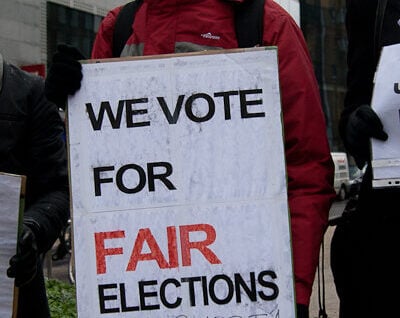Key Takeaways
- Pennsylvania Supreme Court election asks voters to say yes or no to keep judges.
- Retention votes don’t show party labels and have no opposing candidates.
- A “yes” vote keeps your chosen judge for another decade.
- Late-night fundraising messages can scare and mislead voters.
- Clear facts help protect democracy more than urgent appeals.
The Pennsylvania Supreme Court election is coming on November 4. This vote looks simple, but it holds real power over our laws. Instead of choosing between two candidates, we only answer one question: Should this judge stay in office? That makes the Pennsylvania Supreme Court election unique. Yet, many people don’t understand it. As a result, they get confused by loud fundraising messages and scare tactics.
How the Pennsylvania Supreme Court Election Works
Every ten years, Pennsylvania asks voters whether each Supreme Court justice should keep working. You see a judge’s name and you vote “yes” or “no.” There are no party labels beside the name. There is no list of rivals to compare. It’s just a straight vote on one person. If you say “yes,” the judge stays for another ten years. If you say “no,” the governor picks a temporary replacement. Then voters pick a new judge in the next odd-year election.
Why Judges Face Yes-or-No Votes
In most elections, candidates from different parties compete. But in a retention vote, a judge faces only the voters. This process aims to keep judges above party politics. The idea is that law should guide decisions, not party games. However, it can confuse people who expect a normal contest. That confusion can let misleading messages take hold.
The Stakes for Voters
This Pennsylvania Supreme Court election will decide who makes big legal calls on state disputes. These justices shape rules on voting rights, redistricting, and civil liberties. Winning “no” votes could tilt the court’s balance. If one justice loses retention, the governor’s pick could shift opinions on key cases. That is why this election matters so much.
Campaign Money and Loud Messaging
Loud fundraising texts try to warn you that the world will end if you don’t give money now. Yet, most of the scary claims in those messages lack facts. For example, some messages urged urgent action like an emergency. In reality, polling shows the “yes” side leads by double digits. Also, Democrats have spent three times more on this race than Republicans. So the crisis tone is often just a tactic to grab your attention and your dollar.
How to Spot Truth and Ignore Noise
First, remember that the Pennsylvania Supreme Court election is nonpartisan. Don’t expect attack ads comparing candidates. Second, look for clear explanations of judge records and opinions. Third, ignore texts that warn of “imminent collapse” without evidence. Instead, read balanced summaries that explain how retention works. Finally, talk to friends, family, or local groups about this vote. Shared knowledge can beat scare tactics.
Why Clear Facts Protect Democracy
When people know the rules, they vote with confidence. That stops spenders and loud broadcasters from pushing their own agenda. For example, Spotlight PA published an easy-to-read guide on retention elections. It explains that no judge has lost statewide retention since 1968, except one. It also notes that temporary appointees rarely run in full-term races. These facts calm fears and show voters the real state of play.
How to Help and Stay Informed
Talk about the vote with your peers. Post simple facts on social media. Host a watch party to explain retention ballots. Check trustworthy local news outlets for clear overviews. Avoid late-night fundraising appeals that use scare words. Instead, share neutral summaries that explain the Pennsylvania Supreme Court election step by step.
Finally, gather friends and family to plan when and how to vote. If you live in Pennsylvania, mark your calendar for November 4. If you live elsewhere, help spread the word to your Pennsylvania friends. Democracy grows stronger when voters know what they decide.
Frequently Asked Questions
What happens if I vote “no” in a retention election?
If you vote “no,” the governor names a temporary judge. Then voters choose a full-term replacement in the next odd year. That means the seat stays filled but could change long term.
Why don’t party labels appear next to judges’ names?
Retention votes aim to keep judges impartial. Without party labels, voters focus on a judge’s record and conduct, not party politics.
Has any judge ever lost a statewide retention vote?
Yes, one statewide judge lost since 1968. It’s very rare. Most judges win retention by large margins.
How can I avoid misleading fundraising messages?
Ignore texts that scream urgent warnings without facts. Seek balanced news summaries that explain retention. Talk with trusted friends or local groups for accurate insights.

